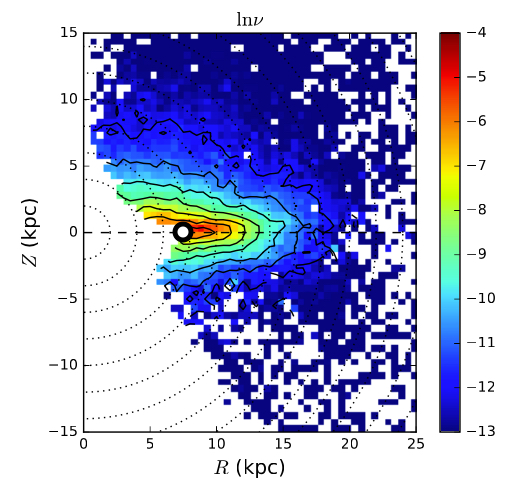NAOC Astronomers Report Bigger Milky Way Disk
An international group of astronomers led by Dr. Chao Liu from National Astronomical Observatories of Chinese Academy of Sciences reports that the Milky Way disk is bigger than previously known by 25%. This result has been published in the recent volume 9 of Research of Astronomy and Astrophysics, 2017.
They use about 30 thousand LAMOST observed red giant branch stars to map the tomographic map of the Galactic disk. From the tomographic map, they find that the disk extends to as far as 62 thousand light years from the center of our galaxy. Beyond 62 thousand light years, the disk smoothly fades away and the Galactic halo takes over.
Before this work, people usually thought that the Galactic disk has a radius of only about 48 thousand light years and there is a hard-cut at the edge of the disk. Although a few works have found a dozen of young stars at the outskirt of the Galaxy, this work is for the first time gives a full view of the bigger disk so that people can directly see how the outer region of the Galaxy looks like.
The new discovery of the shape of the Galactic disk challenges many theories of the formation and evolution of the disk, while some theoristsare encouraged by the result since this is what they expect based on their models.
As a byproduct, astronomers do not find the famous substructure---Monoceros ring---in the outskirt of our Galaxy. Monoceros ring has been found from observations only partly cover the upper region of the outer disk. Astronomers thought it is an evidence that a smaller galaxy is disrupted by the Milky Way. The latest result raises more debate on this issue and astronomers must rethink the nature of Monoceros ring.

Figure: It shows the tomographic map of the Galactic disk. The colors indicate the volume density of star; redder means stars are denser and bluer stands for less dense region. The Sun is located at the black circle.